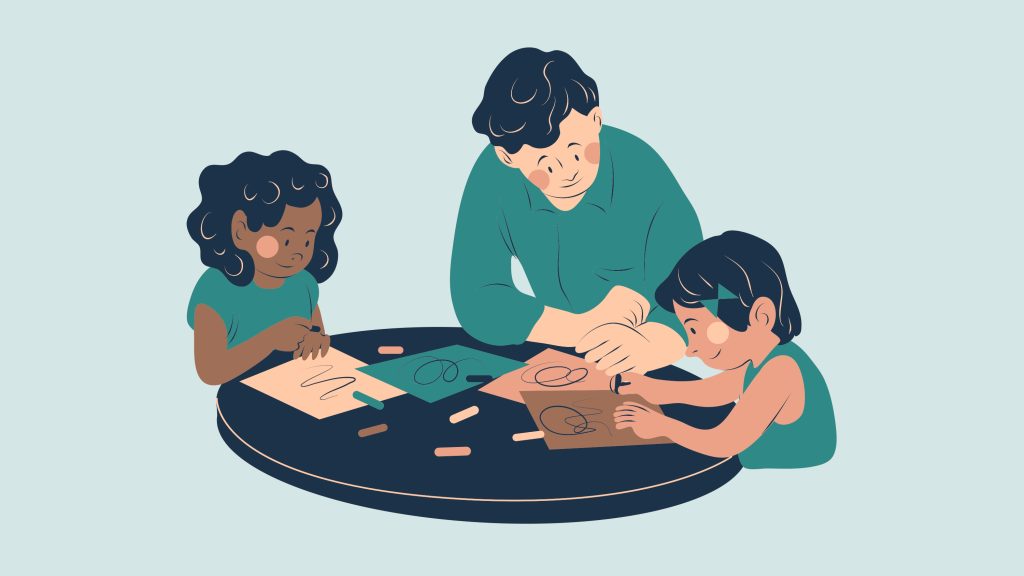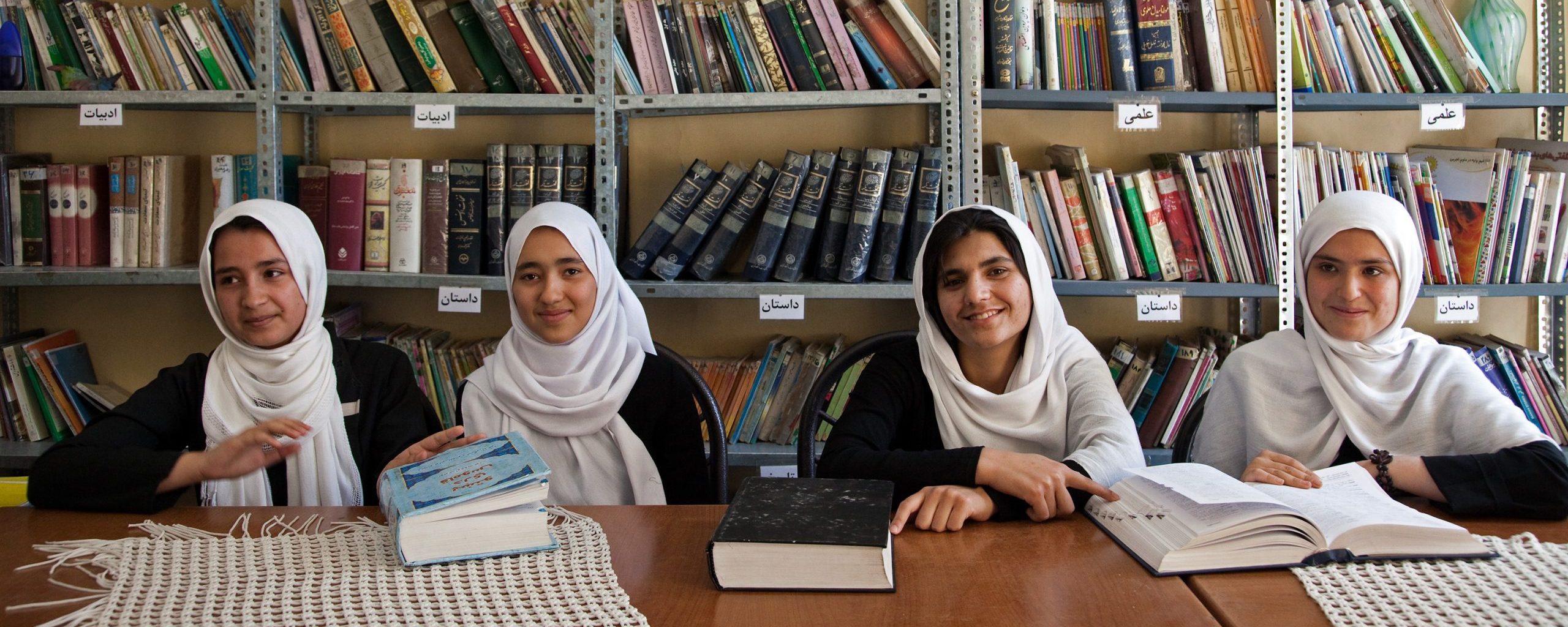In A Theory of Justice, John Rawls contends that political institutions should prioritise the rights of the most vulnerable in society. World Children’s Day, first established in 1954, affirms that priority. It affirms children’s rights to engage in discourses which influence their communities. It allows parents, teachers, community leaders, and young adults to consider what they can do to improve the lives of young(er) people around them. In this way, World Children’s Day is an excellent moment for reflecting upon the state of children worldwide–and for taking action to change it. In this press release, Broken Chalk reports on human rights abuses against children in the Democratic Republic of Congo, Ukraine, and the Occupied Palestinian Territories.

The Democratic Republic of Congo
As of June 2023, 2,420 children had been killed, maimed, abducted and sexually violated in The Democratic Republic of Congo (DRC) (Save The Children, 2023). These atrocities emerged from the ongoing political conflict between M23, the government, and paramilitary groups. The collapse of government infrastructure makes Congo’s population–which has a median age of 16–extremely vulnerable to abduction, induction into military groups, sexual violence, and death. The prevalence of ‘street children’, as locals call them, throughout Congo captures a central dimension of human rights violations against children in Congo.
Street Children
Rape and sexual violence are standard methods of warfare employed by Congolese paramilitary groups. The victims often face immense shame from their communities (Humanium, 2020). In many cases, these rapes result in unwanted pregnancies. To distance themselves from these traumatic events–and social shame– women will often abandon their children. As a result, these abandoned children are forced to live on the streets/forests with other orphans (Humanium, 2020). Once in these groups, they are confronted with a new social hierarchy: competition with older (sexually exploitative/exploited) children, gangs, and insurgent groups. In addition to these grave circumstances, they are often used for cheap child labour (Humanium, 2020). Children are ‘saved’ from the chaos of the streets by armed groups, where they are trained as soldiers. In turn, the children are taught to reproduce the cycle of violence and exploitation which constrained them.
Child Soldiers
According to Relief Web (2023), “The DRC had the highest number of child abductions globally”, sometimes as young as five years old. In 2023, 730 children were kidnapped from their homes (Save The Children, 2023). Furthermore, 1,600 children have been recruited by armed groups (France24, 2023). Child soldiers are subject to a tragic nexus of sexual and physical abuse. The infamous practice of holding children as “fetish keepers” is particularly appalling. Confident children are recruited because they believe they possess magic powers (Humanium, 2020). The recruits undergo a ceremonial abdominal cut. Those who survive this trial are put on the front lines of combat due to their apparent powers (Save The Children, 2023).
A report by the International Peace Support Training Center (IPSTC) found that over 90% of child soldiers had witnessed extreme violence and murder (IPSTC, 2013, p.8). Furthermore, approximately ⅓ of child soldiers have experienced sexual abuse, while almost 80% have been maimed (IPSTC, 2013, p.8). In the wake of these facts, the government has committed to preventing child recruitment into military forces (United Nations, 2017). For example, in 2013, 30,000 child soldiers were freed from the armed forces (ICC, 2013, p.2). Nevertheless, re-recruitment into these forces remains a serious issue.
Education
The DRC has committed to securing free primary education for its citizens, allowing over 4.5 million children to attend school (U.S. Agency for International Development, n.d.). So far, it has produced a literacy rate of 80 % (89.5% males and 70.8% females) (Central Intelligence Agency, 2023). In 2015, the IRC, Global TIES for Children, and the DRC government jointly pursued four goals: (1) teacher training, (2) community mobilisation, (3) vocational training, and (4) professional development (rescue, 2015). By 2016, students’ reading, geometry, and numeracy scores had increased (New York University & International Rescue Committee, 2015). However, poverty and warfare continue to strain the DRC’s education system.
The DRC’s commitment to free primary education eventually collapsed because of insufficient funding. The program depended on parents’ income, which could not support teachers’ salaries (usaid.gov). In turn, military conflict has forced millions of children to flee their homes–and schools.

Ukraine
On February 24th 2022, Russia started its invasion of Ukraine. Since then, over 3,000 schools have been destroyed, 7 million children have been displaced, 9,701 civilians have been killed, and 17,748 have been injured (United Nations, 2023). Russia’s relentless airstrikes and on-ground military operations constitute numerous human rights violations. According to a report published by the Independent International Commission of Inquiry in Ukraine, these violations include “unlawful attacks with explosive weapons…torture, sexual and gender-based violence, and transfers and deportations of children” (IICIU, 2023). Children in Ukraine face a unique set of human rights violations of the Convention on The Rights of The Child (CRC).
Education
The Ukrainian constitution affirms that “everyone has the right to education” (Human et al., 2023, p.58). Ukraine further recognises education as a human right, providing that “…international humanitarian law envisages [that]:… the right of children to receive an education shall be guaranteed” (Human et al., 2023, p.58). However, Russian forces have eroded (at best) and wholly decimated (at worst) Ukraine’s educational infrastructure.
There are reports of Russian military forces using schools as military infrastructure. In “Tanks on The Playground”, Human Rights Watch found that the Russian troops had commandeered a school in Izium. Eventually, a fire-fight between the Russian and Ukrainian military caused a fire which burned it down. There have also been reports of Russian forces stealing supplies from and hanging swastika insignias within schools. Online education has also been attempted–even though Russian attacks on power generators have severely restricted internet access. Nevertheless, the Ukrainian Ministry of Education reports that +95% of students were enrolled in schools (Human et al., 2023b).
Trafficking
The mass displacement of Ukrainian children has also increased the prevalence of human trafficking. Traffickers take advantage of and foment chaos at the borders, where children become separated from family members and are ultimately abducted (Siegfried, 2022). Traffickers include private and public bodies. The Yale School of Public Health found that Russian forces were abducting children and sending them to re-education camps (Viswanathan, 2023). Putin claims these transfers were conducted legally and saved their lives (Dickinson, 2023). Ukrainian officials have identified close to 20,000 victims, spread across Russia’s 40 camps, located from Crimea to Siberia.

Palestine – Education amidst suffering, fear and occupation
The recent events unfolding in Palestine have brought everything to a halt. Since the beginning of the occupation, Palestinian citizens have experienced numerous forms of suffering at the hands of Israeli authorities. Nevertheless, the current conflict has not only aggravated the fear and pain of Palestinian men and women but also prevented the proper development of future Palestinian generations.
Education represents a significant element of Palestinian society. According to UNICEF, 95.4% of Palestinian children have been enrolled in primary education. However, the statistics fail to tackle an ongoing challenge: school access. While the enrollment percentage presents a chance for a bright future for Palestinian children, the reality on the ground seems different. Vulnerable categories such as adolescent children with disabilities are more likely to drop out of school, with 22.5% of boys and 30% of girls with disabilities aged 6-15 never even enrolling in schools (UNICEF, 2018).
Moreover, due to the ongoing tensions in the Palestinian territories, half a million children are in dire need of humanitarian assistance to access quality education. The volatile environment and repetitive violent episodes of escalation around the West Bank and Gaza Strip, alongside restrictions imposed by Israeli authorities, pose further threats and challenges to the protection of children’s rights within the Palestinian Territories. Furthermore, the violations of children’s rights in Palestine not only sabotage the ability of children to learn and develop their potential but also enhance mental health issues, with fear, distress and intimidation impacting their everyday lives (OCHA, 2017).
While statistics bring an unparalleled contribution to the situation on the ground, they nevertheless fail to tackle the experiences of Palestinian children and citizens. In a recent article published by Al Jazeera, Ruwaida Amer, a science teacher at a local school in Gaza, describes the war’s impact on her everyday life. “For me, it is an almost maternal relationship between me and my students, and it extends beyond schoolwork”, she recalls. Since the government announced the suspension of the 2023-2024 school year, she has been unable to meet her students. She thoughtfully describes how her teaching career developed into something more than a teacher-student relationship. “They have this knack for making me laugh even when I am annoyed at their naughtiness – I cannot keep a straight face”, she fondly remembers. However, with the brink of the Israeli offensive within the territories of Palestine, the situation has changed. Now, all the beautiful experiences that she had with them are but mere memories. “I miss their morning sleepiness. I miss their naughtiness. I miss hearing them shout “Miss!” when I greet them. I want this war to stop so I can go back to getting to know them.” (Amer et al., 2023)
References
Central Intelligence Agency. (2023). Congo, Democratic Republic of the – The World Factbook. https://www.cia.gov/the-world-factbook/countries/congo-democratic-republic-of-the/#people-and-society
Dickinson, P. D. (2023, July 27). Russia’s mass abduction of Ukrainian children may qualify as genocide. Atlantic Council. https://www.atlanticcouncil.org/blogs/ukrainealert/russias-mass-abduction-of-ukrainian-children-may-qualify-as-genocide/
Education | Democratic Republic of the Congo | U.S. Agency for International Development. U.S. Agency For International Development. (n.d.-b). Education | Democratic Republic of the Congo | U.S. Agency for International Development. https://www.usaid.gov/democratic-republic-congo/education#:~:text=Free%20primary%20education%20is%20becoming,of%20teachers%20tended%20to%20decrease.
France24. (2023, September 8). Violence makes eastern DR Congo “worst place” for children :
UN. France 24. https://www.france24.com/en/live-news/20230908-violence-makes-eastern-dr-congo-worst-place-for-children-un
Human Rights Watch. (2023). “Tanks on the Playground” Attacks on Schools and Military Use of Schools in Ukraine.
Human Rights Watch. (2023b, November 9). Ukraine: War’s Toll on Schools, Children’s Future. Human Rights Watch. https://www.hrw.org/news/2023/11/09/ukraine-wars-toll-schools-childrens-future#:~:text=Russia%27s%20full%2Dscale%20invasion%20of,are%20attacks%20on%20their%20future
Independent International Commission of Inquiry in Ukraine. (2023). Report of the Independent International Commission of Inquiry on Ukraine. OHCHR. https://www.ohchr.org/sites/default/files/documents/hrbodies/hrcouncil/coiukraine/A_HRC_52_62_AUV_EN.pdf
IPSTC. (2013). Reintegration of Child Soldiers in Eastern Democratic Republic of Congo. International Criminal Court.
New York University & International Rescue Committee. (2015). Opportunities for Equitable Access to Quality Basic Education (OPEQ): Final Report on the Impact of the OPEQ Intervention in the Democratic Republic of Congo. https://www.rescue.org/sites/default/files/document/642/ed-opportunitiesforequitableaccesstoqualitybasiceducation.pdf
Opportunities for Equitable Access to Quality Basic Education (OPEQ): Final report on the impact of the OPEQ intervention in the Democratic Republic of Congo. (2015). rescue.org.https://www.rescue.org/report/opportunities-equitable-access-quality-basic-education-opeq-final-report-impact-opeq
Prashad, J. P. (2020, May 19). Children of the Democratic Republic of the Congo – Humanium. Humanium. https://www.humanium.org/en/democratic-republic-congo/
Save The Children. (2023, June 27). DRC remains the epicentre of a child suffering in war as the country tops the world list of grave violations against children – the Democratic Republic of the Congo. ReliefWeb.
Siegried, K. S. (2022, April 13). Ukraine crisis creates new trafficking risks. UNHCR. https://www.unhcr.org/news/stories/ukraine-crisis-creates-new-trafficking-risks
United Nations. (2023, September 24). Ukraine: Civilian Casualty Update 24 September 2023. ohchr.org. https://www.ohchr.org/en/news/2023/09/ukraine-civilian-casualty-update-24-september-2023#:~:text=From%2024%20February%202022%2C%20which,9%2C701%20killed%20and%2017%2C748%20injured.
United Nations. (2017). Grave Violations. childrenandarmedconflict.un.org. https://childrenandarmedconflict.un.org/where-we-work/democratic-republic-of-the-congo/
N/D. “State of Palestine: Out-of-school children”. UNICEF. 2018. Date of access: 18.11.2023 https://www.unicef.org/mena/reports/state-palestine-out-school-children
N/D. “Occupied Palestinian Territory: Humanitarian Needs Overview 2018, November 2017”. OCHA. 2017. Date of access: 18.11.2023 https://reliefweb.int/report/occupied-palestinian-territory/occupied-palestinian-territory-humanitarian-needs-overview-2
Amer. Ruwaida. “In this relentless war, oh, how I miss my students”. Al Jazeera. 2023. Date of access: 18.11.2023
https://www.aljazeera.com/news/2023/11/12/in-this-relentless-war-oh-how-i-miss-my-students
Viswanathan, G. V. (2023, February 22). YSPH research reveals relocation and re-education of Ukrainian children – Yale Daily News. Yale Daily News. https://yaledailynews.com/blog/2023/02/22/ysph-research-reveals-relocation-and-re-education-of-ukrainian-children/

























